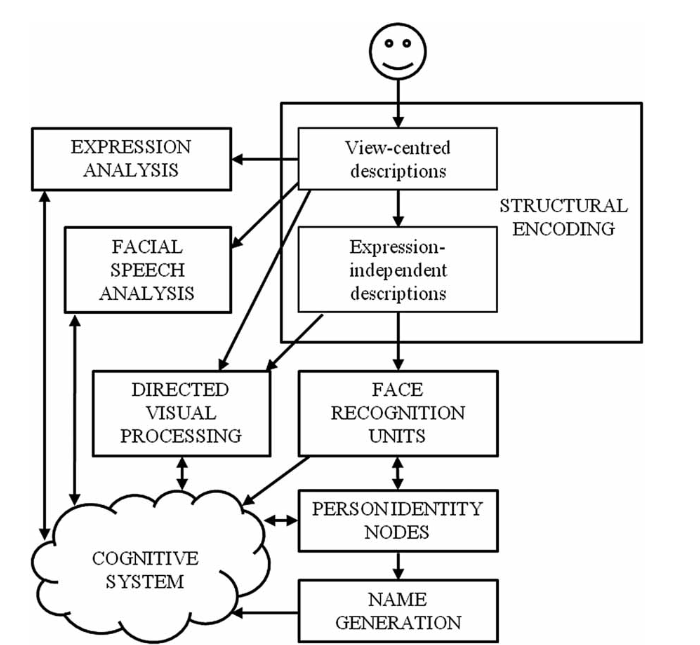Short detour into how we humans actually perceive faces
There is a model that describes how we humans perceive faces.
It happens in several phases and starts with the brain identifying something that looks like a human face. This is also the phase where we perceive basic visual things like size, figure-ground or orientation. After that, the face is mentally represented while at the same time the brain distinguishes what gender the person is and how old he or she is. In the next phase, the facial features that we perceive are compared with each face that we have stored in our brain and if the face matches we have the feeling that we recognize the person. After these phases we come to the fourth and last phase and we remember the name of the person.

Forms and treatments for Prosopagnosia
People with this condition can see every detail of the face. The difference between the brains of these people and people who can recognize faces is that the collected impressions cannot be combined into a complete picture. Since no other cognitive areas in the brain are affected in prosopagnosia, it is not considered a disease. It is more of a dysfunction of the brain, or a genetically determined perceptual weakness. Therefore, the term face blindness is not actually correct, but is still often used to describe this condition.
Once again briefly as a repetition: aquired prosopagnosia develops by for example an accident or as a consequence of an illness, developmental prosopagnosia is since birth and remains in most cases a lifetime.
For simplicity, from here on aquired prosopagnosia will be shortened to AP and developmental prosopagnosia to DP.
As mentioned in my previous blog post, there is no guarantee of cure. The condition can improve, regardless of age or gender. However, if the damage to the brain is too great, no cure and little to no improvement is possible. Since every condition is different, all training programs must be customized to the person’s needs. Other important points to consider are: does the person only have problems recognizing faces or also objects. In the worst cases – apart from the typical consequences such as anxiety, difficulties with finding and practicing a job or generally social interaction with others – things such as food or doorknobs can no longer be recognized or it is necessary to learn to read and write again.

There are many training programs that are supposed to help to remember faces or at least to be able to distinguish them. If therapies are actually successful, it is in most cases the fact that these effects do not last long and the therapy must be repeated after a few months. Interestingly, sometimes minor distinctions are made in the programs depending on what form of condition it is. This is because certain mechanisms in the brain, related to face processing, can be modified or changed, at least in people with DP.
Spoiler: Two specific cognitive training programs have been found to work best for AP and DP. One is face morph training and the other is holistic training. These two trainings were the most likely to show improvements.
(Next up in Part 2: Treatment approaches in acquired Prosopagnosia)
Sources
- Rehabilitation of face-processing skills in an adolescent with prosopagnosia: Evaluation of an online perceptual training programme, Sarah Bate, Rachel Bennetts, Joseph A. Mole, James A. Ainge, Nicola J. Gregory, Anna K. Bobak, Armanda Bussunt (04.11.2019), https://www.researchgate.net/publication/343935303_Prosopagnosia
- Approaches to Improving Face Processing in Prosopagnosia, Joe DeGutis (2016), https://www.cdnetwork.org/wp-content/uploads/2016/12/Degutis_12.13.pdf
- Face Processing Improvements in Prosopagnosia: Successes and Failures over the last 50 years, Joe DeGutis, Christopher Chiu, Mallory E Grosso, Sarah Cohan (8.2014), https://www.researchgate.net/publication/264940858_Face_Processing_Improvements_in_Prosopagnosia_Successes_and_Failures_over_the_last_50_years
- Face to Face Prosopagnosia Research & Community Spring 2020, o.A. (Spring 2020), https://www.faceblind.org/assets/files/newsletters/Face%20to%20Face%20Newsletter%20-%20Spring%202020.pdf